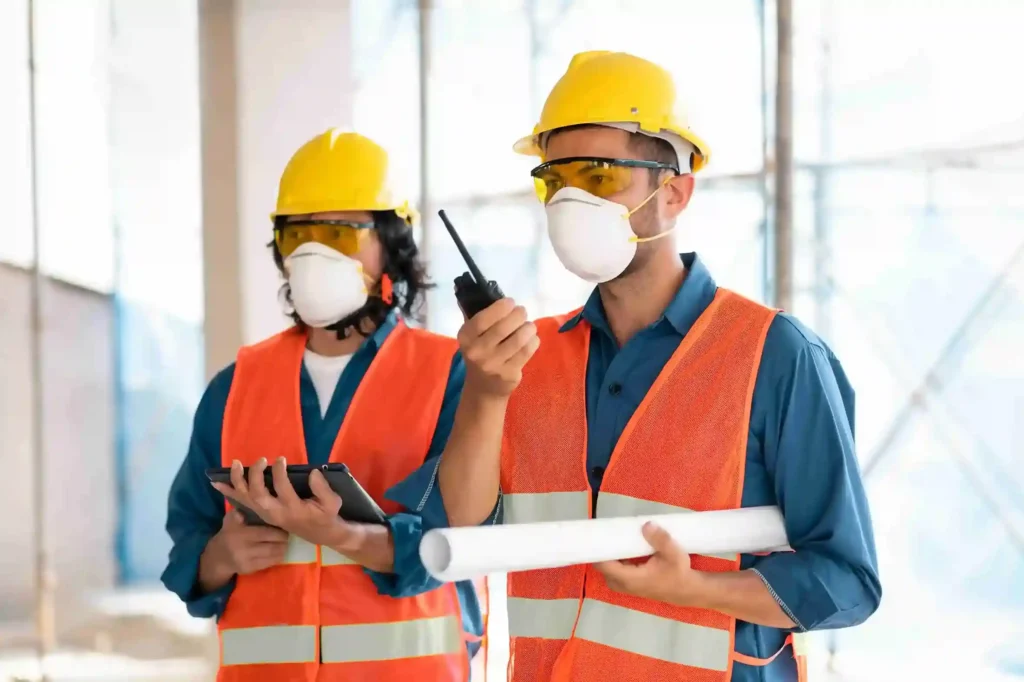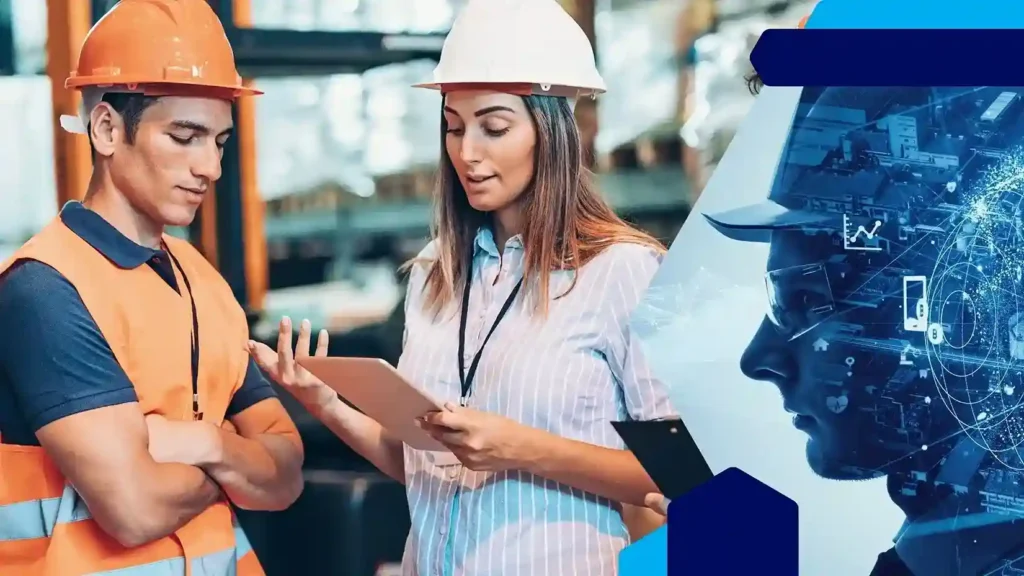Introduction
In today’s rapidly evolving workplace landscape, ensuring employee safety is paramount. Let’s explore the transformative impact of Machine Vision Inspection, from its definition and evolution to its integration with AI, success stories, challenges, and future outlook.
Definition of Machine Vision Inspection
Machine Vision Inspection refers to the use of advanced technology to visually inspect and analyze objects within an industrial setting. This cutting-edge approach ensures precision and accuracy, revolutionizing traditional safety measures.
Importance of Employee Safety
As organizations prioritize employee safety, the significance of adopting innovative technologies like Machine Vision Inspection becomes evident. This technology not only safeguards employees but also enhances overall workplace efficiency.
Evolution of Workplace Safety
Traditional Safety Measures
From manual inspections to basic safety protocols, traditional measures laid the foundation for workplace safety. However, evolving challenges necessitated a shift towards more advanced and efficient solutions.
Challenges Faced in Ensuring Employee Safety
Despite traditional safety measures, modern workplaces face unique challenges, such as complex machinery and diverse hazards. Machine Vision Inspection addresses these challenges, offering a comprehensive solution.
Role of Technology in Enhancing Safety
The integration of technology, particularly Machine Vision Inspection, plays a pivotal role in enhancing workplace safety. This shift is crucial for maintaining a secure and productive work environment.
Understanding Machine Vision Inspection
Definition and Basics
At its core, Machine Vision Inspection relies on sophisticated cameras and computer systems to replicate human vision. Understanding the basics is essential for grasping its widespread applications.
Components and Functionality
Comprising cameras, processors, and software, the components work synergistically to capture and interpret visual data. This intricate functionality ensures accurate inspections across various industries.
Applications in Various Industries
From manufacturing and healthcare to logistics and beyond, Machine Vision Inspection finds applications in diverse industries, proving its versatility in ensuring safety across different work environments.
Advantages of Machine Vision Inspection in Employee Safety
Real-time Monitoring
The ability to monitor operations in real-time is a game-changer. Machine Vision Inspection provides instant feedback, allowing for quick responses to potential safety issues and minimizing risks.
Detection of Hazards
By identifying potential hazards before they escalate, Machine Vision Inspection contributes significantly to preventing accidents. Early detection ensures a proactive approach to workplace safety.
Prevention of Accidents
With its predictive capabilities, Machine Vision Inspection not only detects hazards but actively contributes to accident prevention. This proactive stance is instrumental in creating a safer work environment.
Integration of AI in Machine Vision Systems
Machine Learning Algorithms
The incorporation of machine learning algorithms elevates Machine Vision Inspection Systems to a dynamic level. These algorithms enable the system to adapt and improve its performance over time.
Adaptive Systems
Adaptive systems enhance the flexibility of Machine Vision Inspection, allowing it to adjust to changing workplace dynamics. This adaptability is crucial for maintaining optimal safety levels.
Continuous Improvement
The commitment to continuous improvement ensures that Machine Vision Inspection evolves alongside emerging technologies. This dedication contributes to sustained advancements in employee safety.
Challenges and Limitations
Potential Issues with Machine Vision
Despite its benefits, Machine Vision Inspection faces challenges. Understanding potential issues is essential for implementing effective solutions and mitigating risks.
Overcoming Challenges
Addressing challenges head-on is crucial. By exploring strategies to overcome potential issues, organizations can ensure a seamless integration of Machine Vision Inspection into their safety protocols.
Continuous Improvement Strategies
The journey doesn’t end with overcoming challenges; organizations must implement continuous improvement strategies to refine Machine Vision Inspection systems and maintain peak efficiency.
Future Outlook
Emerging Technologies in Employee Safety
Exploring the horizon, we delve into emerging technologies poised to further enhance employee safety. Staying informed about these developments is key for future-proofing workplace safety.
Potential Developments in Machine Vision Inspection
Anticipating potential developments in Machine Vision Inspection, we discuss how this technology may evolve to address new challenges and meet the ever-changing demands of the modern workplace.
How Companies Can Implement Machine Vision
Steps for Integration
Practical steps for integrating Machine Vision Inspection into existing safety protocols are essential. A step-by-step guide ensures a smooth transition and maximum effectiveness.
Employee Training Programs
The success of Machine Vision Inspection relies on employee understanding and cooperation. Implementing comprehensive training programs is vital for ensuring that employees adapt seamlessly to this innovative safety measure.
Regulatory Compliance and Standards
Adherence to Safety Guidelines
Compliance with safety guidelines and standards is non-negotiable. Ensuring that Machine Vision Inspection aligns with established regulations is crucial for its acceptance and effectiveness.
Legal Implications
Navigating legal implications is paramount. Organizations must be aware of the legal framework surrounding Machine Vision Inspection to avoid potential pitfalls and legal challenges.
Cost-Benefit Analysis
Initial Investment vs. Long-term Benefits
Conducting a thorough cost-benefit analysis provides organizations with insights into the initial investment required for Machine Vision Inspection compared to the long-term benefits it brings in terms of employee safety.
ROI in Employee Safety
Understanding the return on investment (ROI) in terms of employee safety is a critical aspect of justifying the adoption of Machine Vision Inspection. Demonstrating its long-term value is essential for decision-makers.
Public Perception and Acceptance
Employee Feedback
Considering the human element, gathering employee feedback on the integration of Machine Vision Inspection is crucial. Positive feedback contributes to a smoother transition and widespread acceptance.
Shaping a Positive Perception
Proactively shaping a positive perception of Machine Vision Inspection among employees is essential for overcoming resistance and fostering a culture of safety and innovation.
Case Study: XYZ Corporation
Implementation Journey
Exploring the real-world implementation journey of XYZ Corporation sheds light on the practical aspects, challenges faced, and the overall impact on safety metrics.
Impact on Safety Metrics
Analyzing the specific impact on safety metrics showcases how Machine Vision Inspection has positively influenced XYZ Corporation’s safety records and employee well-being.
Conclusion
In summary, Machine Vision Inspection redefines workplace safety, offering real-time monitoring and hazard prevention. Its integration with AI, coupled with success stories, assures continual improvement. Through a meticulous cost-benefit analysis and adherence to regulations, organizations chart a path toward a safer and innovative future. Embracing Machine Vision signals commitment to employee well-being and sets the stage for a paradigm shift in safety protocols. For further inquiries or a demo, you can Contact Trident Information Systems. Stay ahead of the innovation curve! Follow our LinkedIn page for the latest insights and updates on how VIS are revolutionizing employee safety.
Recap of Machine Vision’s Impact on Employee Safety
Summarizing the key takeaways, we revisit the transformative impact of Machine Vision Inspection on employee safety, highlighting its role in revolutionizing workplace safety measures.
The Path Forward
Looking ahead, we discuss the path forward for organizations embracing Machine Vision Inspection, emphasizing the continued commitment to innovation, safety, and employee well-being.
FAQs
A. How does machine vision ensure real-time monitoring?
Exploring the technology behind real-time monitoring, we delve into the mechanisms that make Machine Vision Inspection a reliable tool for instantaneous safety feedback.
B. Can machine vision detect all types of workplace hazards?
Addressing concerns about the scope of detection, we discuss the capabilities of Machine Vision Inspection in identifying a wide range of workplace hazards for comprehensive safety coverage.
C. What industries benefit the most from machine vision inspection?
Highlighting specific industries, we explore how Machine Vision Inspection is tailored to meet the unique safety needs of manufacturing, healthcare, logistics, and other sectors.
D. Are there any privacy concerns with machine vision in the workplace?
Acknowledging potential privacy issues, we examine the safeguards and ethical considerations associated with implementing Machine Vision Inspection in the workplace.
E. How can employees adapt to the integration of machine vision for safety?
Offering practical advice, we discuss strategies for employees to seamlessly adapt to and embrace the integration of Machine Vision Inspection for enhanced workplace safety.


